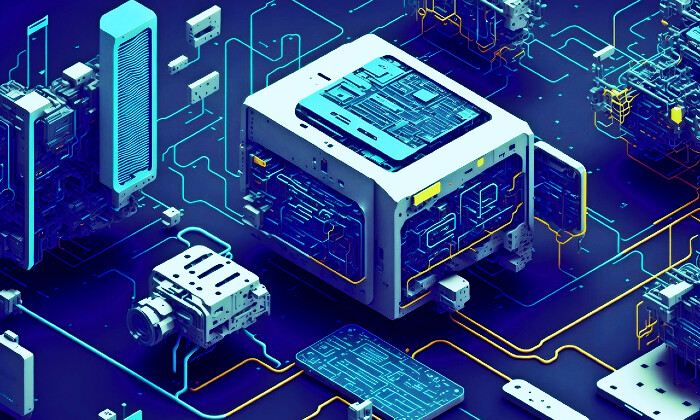Software & OS

Tuxera Keeps Your Data Safe When Power is Lost
April 24, 2024
“If a vehicle crashes while it is recording video on a dashboard camera, a resulting power loss can cause the loss of the last 30 seconds or more of the recording,” said Teemu Sivonen, Product Manager at Tuxera. Tuxera released an innovative data resilience and fail-safety feature for embedded systems developers, its hardware cost-friendly Tuxera Persistence Manager.
Processing

Wind River Studio Developer Supports DevSecOps Adoption for the Intelligent Edge
April 24, 2024
ALAMEDA, CA — Wind River® announced the latest release of Wind River Studio Developer, an edge-to-cloud DevSecOps platform designed to accelerate the development, deployment, and operation of mission-critical systems. The new enhancements and delivery models for Wind River Studio are designed to help software teams adopt cloud-native development capabilities that support DevSecOps approaches.
Automotive
Multimedia

Pre-Compliance Testing is a Must: Embedded Executive, Rohde & Schwarz
April 24, 2024
Pre-compliance testing is a phenomenon that should be a no-brainer, but for lots of reasons—none of them good—it’s not always done. When you’re doing a design that requires RF and you don’t do the testing, you’re really asking for trouble. That goes double for a product that’s going to ship into multiple geographies. To understand how this process should occur, I spoke to Paul Denisowski, a Product Management Engineer at Rohde & Schwarz, on this week’s Embedded Executives podcast.
Analog & Power
-
Sustainable Irrigation through Embedded in India
April 19, 2024
-
Why You Should Consider .8mm PCBs Versus 1.6mm
April 12, 2024
-
e-peas Showcases Complete Solutions for Batteryless Design with Industry-Leading Ecosystem Partners at embedded world
April 05, 2024
-
embedded world 2024 Best in Show Nominees
April 01, 2024
Healthcare
-
RTLS and Mobile Medical Equipment: How Hospitals Can Prevent Critical Assets from Going Missing
January 15, 2024
-
Engineering Hero: Bringing Prosthetic Arms to Life
December 28, 2023
-
Engineering Hero: The Bright Future of Bionic Limb Prosthetics
December 27, 2023
-
Engineering Hero: Treating Brain Cancer by Targeting Mutations
December 20, 2023
Industrial
-
AAEON Introduced an Android 11 10.1" Rugged Mobile Tablet Leveraging Rockchip RK3399
April 23, 2024
-
The Future of Embedded Software Development: The Trend Toward Greater Complexity is Reshaping Product Development
April 22, 2024
-
MediaTek's Vice Chairman and CEO Rick Tsai to Deliver COMPUTEX Keynote
April 18, 2024
-
At embedded world, CEVA Accelerates Innovative Connectivity in MCUs and SOCs for IoT and Smart Edge AI Applications
April 09, 2024
IoT
-
New Research: The State of IoT Software Development, A Benchmark for Embedded Teams and Leaders
April 23, 2024
-
7L600: EKF Introduced its First ModBlox7-Based Product
April 22, 2024
-
Digi International's Digi Connect Sensor XRT-M Powered by Digi Axess
April 16, 2024
-
Gateways & Nodes for Raspberry Pi, Pico, Espressif, and More
April 15, 2024
Networking & 5G
-
Alif Semiconductor Announces BLE and Matter Wireless Microcontroller With Neural Co-Processor for AI/ML Workloads
April 10, 2024
-
Doubling Down on 5G: Integration of Two 5G Modules in One Device
April 10, 2024
-
How Single Pair Ethernet Streamlines Industrial Networks
April 04, 2024
-
Walter, an Open Source WiFi, BLE, LTE-M, NB-IoT, and GNSS Module for Prototyping and Production
April 02, 2024
Open Source
-
Semidynamics Drops its All-In-One AI IP On Us
April 11, 2024
-
DigiKey Hosts Great Board Giveaway, Technical Demos and More at Embedded World 2024
April 05, 2024
-
Circuit Playground Express: For Education, Pros Too?
April 03, 2024
-
Executive Viewpoint: Jason Kridner, BeagleBoard.org
April 02, 2024
Processing
-
Swift Processing from VersaLogic
April 24, 2024
-
The Evolution of Processor Cores, and Embedded World 2024
April 18, 2024
-
Embedded Executive: Looking For a Job? Focus on Your Writing, Webster & Webster
April 17, 2024
-
Innominds Leverages Qualcomm to Build New Edge AI Platform
April 15, 2024
Software & OS
-
SYSGO Supports RISC-V with its Embedded Linux ELinOS Version 7.2
April 17, 2024
-
Product of the Week: Parasoft’s C/C++test CT for Continuous Testing & Compliance
April 15, 2024
-
LDRA Released its Domain-Specific Software Productivity Packages for the LDRA Tool Suite
April 12, 2024
-
RTOS Functional Safety Certification – Table Stakes or not?
April 11, 2024






















